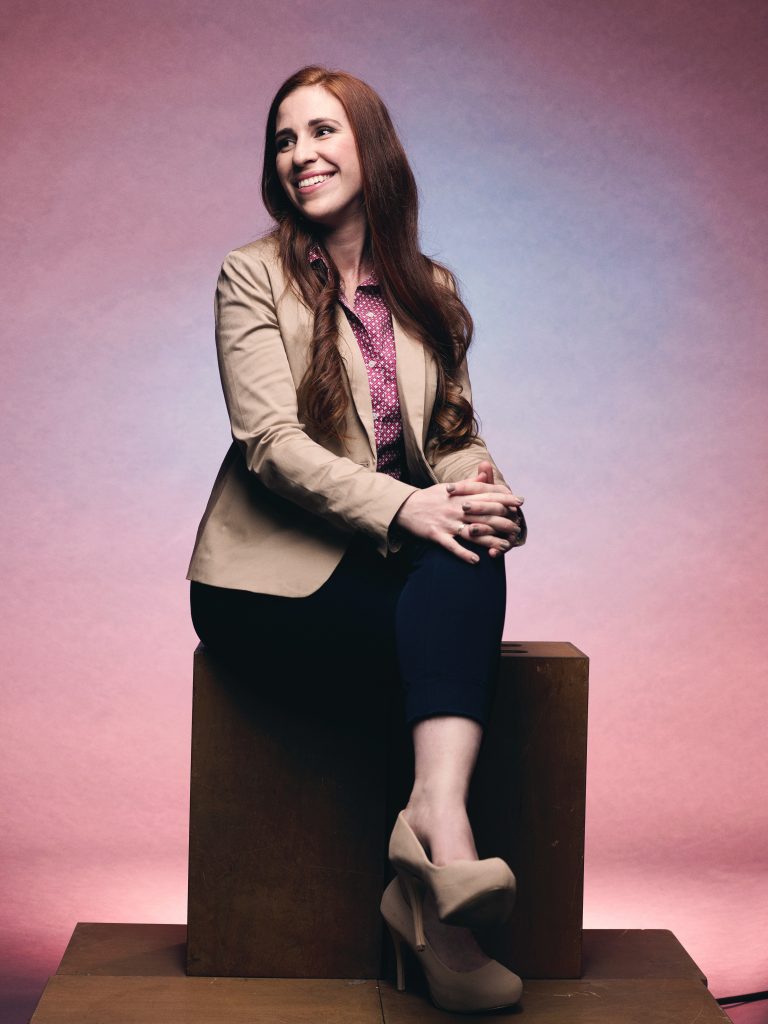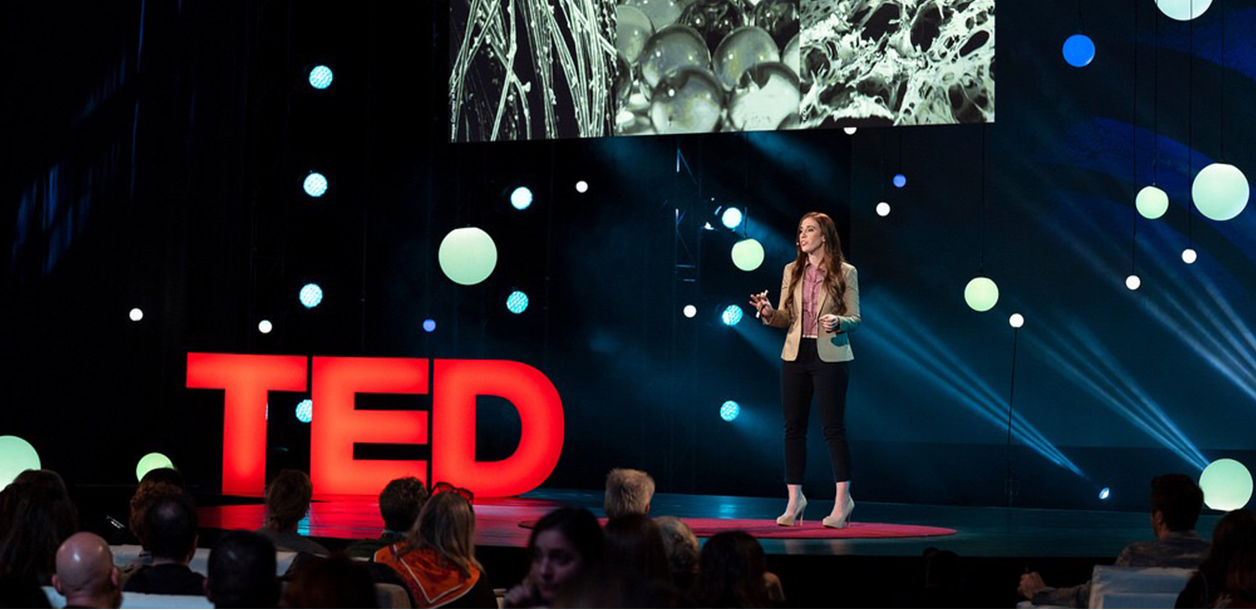Today, many Americans are asking themselves versions of this question: “Was that bad cough I had in January COVID-19?” Without comprehensive nationwide testing, it’s been impossible to measure in real time the total number of Americans who have been exposed to SARS-CoV-2, the virus that causes COVID-19. However, there is another way to come up with a reliable estimate, and Kaitlyn Sadtler ’11, biological sciences, is leading the charge.
The 10,000-participant study Sadtler is orchestrating at the National Institutes of Health (NIH) will look for antibodies to SARS-CoV-2 in volunteers’ blood, allowing the research team to estimate just how many people have been infected across the country—whether they had symptoms or not. The research team used U.S. Census data to select a representative sample of Americans based on factors such as age, sex, race, and geographic location. The project originated with a Twitter conversation about how Sadtler could use her expertise to support the current crisis.

“I think that a lot of people, including anyone with an immunology background, or a relation to infectious disease, was just sitting there thinking, ‘Okay, what can I do to help in this situation?’” says Sadtler, an Earl Stadtman tenure-track investigator at the National Institute of Biomedical Imaging and Bioengineering, a division of the NIH. “Because that’s what scientists want to do—we’re problem solvers, we love puzzles.”
“Mail-in blood”
The original plan was to collect a few hundred samples from the DC metro area. But bringing hundreds of people to NIH to draw their blood would increase the risk of spreading the coronavirus. Instead, they mailed volunteers finger-prick test kits they could use at home and then send back.
“Once we had that realization that we could mail in blood, the study expanded very rapidly,” Sadtler says. However, even she and her team didn’t expect the overwhelming response to their call for volunteers. More than 400,000 people emailed expressing interest, which necessitated writing code to sort through the volunteers’ information and ensure a representative sample.
Sadtler’s team and partners at the University of Alabama-Birmingham and University of Pittsburgh enrolled 11,000 volunteers and sent them their test kits. Then, Sadtler’s team collected and analyzed the samples as they were delivered to her laboratory at the NIH. By the end of September, the team had finished measuring antibodies in more than 10,000 samples, their target number.
Now, they’re analyzing the data, and they hope to have the information publicly available in the coming weeks. The results, Sadtler says, “will give us a statistically robust viewpoint of how many people have actually probably had this thing.”
Digging through the data
There are other questions the data can help answer, too, like how the disease differentially affects certain groups. Because volunteers supplied a range of information about themselves, the researchers can start to tease out the roles of different demographic factors on the disease.
For example, the virus has disproportionately affected Black people in the United States. Sadtler’s data may help explain whether race itself correlates with a greater chance of disease exposure and poor outcomes, or if effects of the disease more closely track factors like education level, employment status, or access to healthcare, which often follow racial lines in the U.S.
“There’s a lot to dig out of the data. Our team plans on releasing useful data as quickly as possible, but we will be mining and analyzing this data set for months to come,” Sadtler says.
Engineering mindset
So what comes next? “We do it again—twice,” Sadtler deadpans. The National Cancer Institute’s Serological Sciences Network has granted funding to repeat the study with the same participants six months and 12 months after the first round. Among other things, the repetition will allow the research team to see how the antibody response changes over time. That information will help determine whether booster doses will be required for an eventual vaccine, as they are for some other diseases whose immune responses fade, and potentially start answering some questions about re-infection rates.

The COVID-19 study aligns with Sadtler’s other projects, which focus on the body’s immune response to medical device implants and wound healing. Her work sits at the interface of engineering and immunology, and she works closely with people from a range of academic backgrounds. “I end up feeling like a bit of a translator sometimes,” she says.
It’s her “engineering mindset,” as Sadtler describes it, that’s helped her succeed. She says she’s always asking, “Is there an easier way that we could approach this? Is there an engineering solution to this problem?” which helps her come up with novel solutions other biologists might not initially consider.
A wide lens
Sadtler in part credits her broad education at UMBC for her ability to bridge different fields. “Something that I really liked about UMBC was that it was so focused on undergraduate education, and really making it a good environment for undergraduates to learn,” she says.
She took courses like plant physiology, physics, and organic chemistry, all of which she loved. “I was able to experience biology as a whole, and learn different ways that different fields learn within biology, so I could figure out what my niche was,” she says.
In Sadtler’s last semester, Tamra Mendelson, professor of biological sciences and her academic advisor, offered her a position working on her research. So, “Before starting a postbac in immunology at the NIH, before going into just focusing on cells in a petri dish in the lab, I was out in gaiters helping collect fish in streams across Maryland,” Sadtler recalls. “I loved the opportunity to see what the evolution and ecology side of biology was like, and I really enjoyed it.”
Retriever refresh

Sadtler’s UMBC experience wasn’t all academic. She played on the women’s rugby team for almost all of her four years, half of them with her sister, Samantha Bennett ’09, biological sciences. “It was a great outlet and a great group of women,” she says. “I still keep in touch with women from the team.”
Fortunately, Sadtler and her sister got along well. “I loved having my sister in the same university as me,” Sadtler shares. They even purposely took a psychology class together during Sadtler’s sophomore year.
Now, Sadtler can’t wait to return to the campus, once it’s safe to do so, to witness big changes like the addition of the Performing Arts and Humanities Building, the UMBC Event Center, and the Interdisciplinary Life Sciences Building. But her top priority is visiting the UMBC Bookstore to refresh her Retriever wardrobe.
Whatever the reason, and no matter how busy she is with her important research, Sadtler will always be a Retriever wanting to come home, she says. “I can’t wait to make my way back to UMBC.”
******
Retrievers are on the front lines of COVID-19 research.
UMBC faculty and alumni have been putting their expertise to use since the beginning of the pandemic. In addition to Kaitlyn Sadtler‘s NIH study, Kizzmekia Corbett ’08, M16, biological sciences, is moving her vaccine work forward, with a 95 percent efficacy rate. UMBC President Freeman Hrabowski and his wife Jackie are participants in the Moderna vaccine trial, showing what leadership looks like in action.
Zoë McLaren, associate professor of public policy, writes about how COVID-19 cases are surging upward around the U.S. but rapid testing might allow a turnaround by a massive scale-up of testing. Katherine Seley-Radtke, professor of chemistry and biochemistry, chimes in her expertise to explain what makes some drugs work against viruses and how others aren’t effective treatment of SARS-CoV-2.
Header image: Kaitlyn Sadtler on stage at her TED talk. Photo by Ryan Lash/TED.
Tags: CNMS, COVIDresearch, Fall 2020

